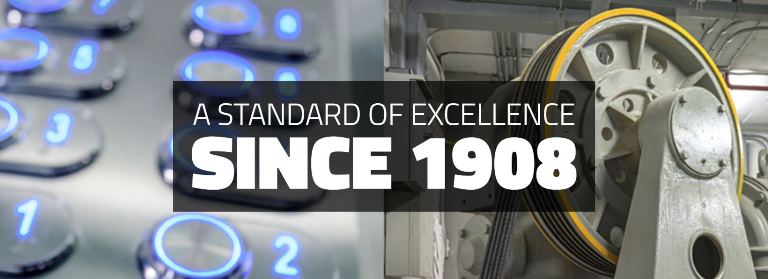Elevator controller – Most hydraulic
elevator controllers will have the same functionality with slight differences
based on if it is a borehole, single stage holeless, multi stage holeless or
MRL. See a picture of a basic hydraulic
elevator controller.
Motor starter – The motor starter is
allows the elevator’s pump motor to run in the up direction. There are a few different options. In new installations you should have a solid
state starter installed.
Elevator door operator – The door operator is
what opens and closes the elevator car doors.
When the car door opens and closes it has a clutch that will pick up
hatch door equipment and allow it the open and close. If an automatic passenger elevator is not at
the floor it is nearly impossible for the hatch doors to open by themselves.
Elevator power unit – The elevator power
unit has a pump, motor, valve, muffler and hydraulic fluid. There are two main types of power units;
Dry
hydraulic power unit
– Typically the pump motor and valve are under the tank. Appropriate application is for higher
capacity elevators, higher travel and anything above 40HP or where you have
hydraulic noise concerns.
Submersible
power unit
– The pump and motor are submerged in oil and the valve is on top of the tank
or in the tank above the oil. Appropriate application is for lower capacity
elevators, lower travel and anything 40HP and below where you do not have
hydraulic noise concerns.
Hole less hydraulic
cylinder
– A holeless hydraulic elevator cylinder became popular after we realized that
lower rise buildings can install these without underground condition risks.
Positives
No underground
condition risks – No well hole
Lower rise applications
are easier to install – less expensive
No well hole driller - less risk and expense
Negatives
Limited in travel – Just because they sell them
doesn’t mean it is a good idea
Multiple piston seals – more potential repairs
If you have a wet pit it will still rust the
cylinder and require replacement of cylinders – If cylinder manufacturer is no
longer around it creates challenges for replacement based on space available.
Take away – A holeless
hydraulic elevator is a great option for some applications[lower rise, lower capacity]. When sizing an elevator make sure you are
getting the correct application for your building’s needs. Just because they make it doesn’t mean it is
a good idea to have installed in your building long term.
Credit - https://www.meiusa.com/ - Minnesota Elevator sells a full line of hydraulic elevator systems.
As always feel free to contact us at www.colleyelevator.com, email Craigz@colleyelevator.com or call 630-766-7230.
Credit - https://www.meiusa.com/ - Minnesota Elevator sells a full line of hydraulic elevator systems.
As always feel free to contact us at www.colleyelevator.com, email Craigz@colleyelevator.com or call 630-766-7230.

















